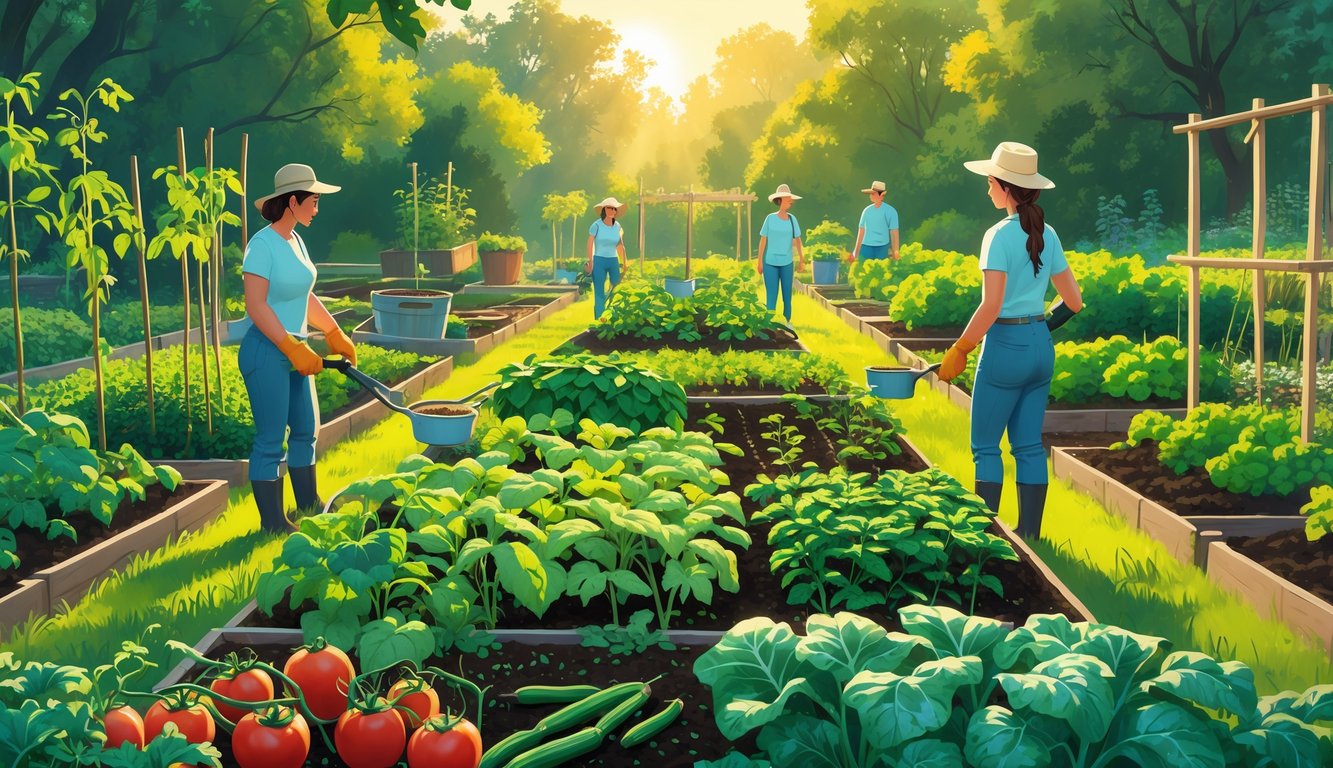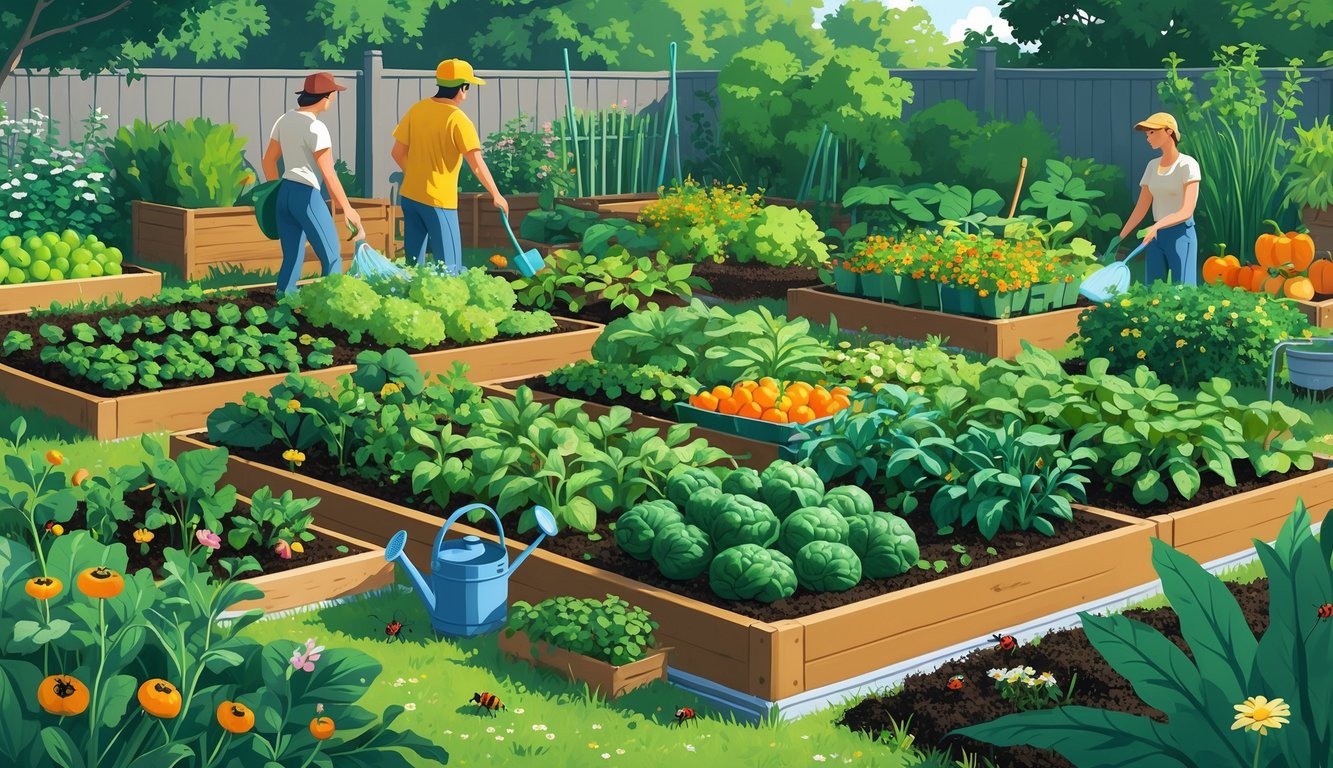
Plant Selection for Effortless Abundance

Kale never quits, cilantro bolts in a week, and nobody warns you that low-effort gardening is basically chaos. I pick, I ignore, sometimes I just let stuff rot in place. Garlic’s everywhere. Sweet potatoes sneak into tomato beds. Every plant’s got its own rules—half the advice is nonsense, half works, and I never know which is which until July.
Top Low-Maintenance Vegetables and Herbs
Spinach doesn’t care about my trashed soil, and Swiss chard outlasts everything except the dandelions I gave up on. Cabbage? Survives drought like it’s nothing—some varieties just don’t quit. Garlic? I plant it wherever, whenever. An extension agent once laughed at me for rotating garlic—he just digs and replants the biggest bulbs, disease be damned.
Beans—runner, bush, whatever’s left in the packet—they go in wherever I find space. They fix their own nitrogen, so less fertilizer, and I just rotate them around the tomatoes and cabbage. Basil’s moody, mint’s a monster, parsley thrives on neglect, oregano’s basically a weed, and rosemary—supposedly picky—grows in my heavy clay if it doesn’t drown over winter. If you want herbs, plant them by the door or you’ll forget them and they’ll bolt out of spite.
Embracing Perennials for Year-After-Year Harvests
Annuals are fine, but perennials? They’re the real lazy win. Rhubarb survives years of neglect, asparagus comes back even if you plant it wrong. Fruit bushes—if you overbuy, just stick them in somewhere shady; worst case, you get a few berries, best case, blackberries take over. Someone on a forum rooted Jerusalem artichokes in gravel and got a bumper crop. Makes no sense.
Coneflowers, chives—stick them on the edge of the beds for pollinators. They basically never die unless you dig them up, and who’s got time for that? Some expert once told me to try sage, thyme, lovage. Even my neighbor’s scraggly sorrel patch comes back thicker every year, despite his dogs. I plant, I ignore, and unless something digs it up, it just keeps on going.
Companion Planting Secrets

There’s always that one dead spot until I shove something odd—basil, marigold, whatever—next to the tomatoes. Sometimes the bees skip a bed for weeks, then suddenly everything’s covered in peas after I mess with the combos. Companion planting isn’t magic, just stubborn trial and error plus a few tricks that keep the bugs and squirrels guessing.
Boosting Yield Through Plant Partnerships
Last spring, I crammed onions between carrot rows—why did nobody mention this stops root fly larvae? Charts claim certain combos work, but everyone’s got a different favorite. Old-timers swear by beans with corn or squash. “Three Sisters” isn’t just folklore—corn props up beans, squash smothers weeds. Microclimates complicate everything. My east beds like tomatoes with parsley, but put that in shade and it’s a flop. You just have to keep messing with combos and hope for the best.
Gardening magazines overpromise, but, confession: tomatoes with basil really did make both taste better and gave me way more tomatoes. Basil seedlings cost too much, but whatever. Sometimes the best companion is a weed you meant to yank—nasturtiums, for example, somehow become the stars.
Encouraging Beneficial Insects with Flowering Plants
It’s not all about the veggies. Toss in alyssum, calendula, or borage—ladybugs and wasps show up, since those flowers are proven bug bait. My neighbor once said, “Let the dill flower.” Suddenly, fewer aphids, more bees, and some confused goldfinches.
Not everyone loves when flowers take over half the veggie bed—my nephew thinks I’m growing weeds for fun—but the pollinators matter. Otherwise, no squash. Lists are useless; sometimes wild bees ignore everything but dandelions. Doesn’t matter. No bugs, no fruit.
Bob Vila’s people warn you about microclimates. Shade, damp, crowding—wreck your plans every time. If I hadn’t let the fennel flower, I’d never have seen those hoverflies. Do what works for your patch, forget symmetry, and don’t let anyone see your garden until midsummer.